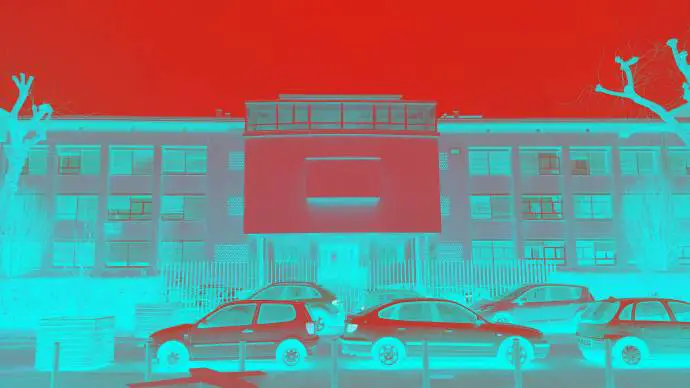January 17, 2018
According to unofficial police reports, 19 people were murdered or otherwise killed in 2017, as noted in a recent report in Delo, which stands at the high end of similar reports in the previous years, especially if compared to 2016’s 10 such death. The most prominent cases were murders of a Slovenian actor Gašper Tič in his home on Trubarjeva cesta in Ljubljana, and of Andrej Cekuta, which was broadcasted live on Facebook by two of his “friends” who beat him to death. Most murders were committed by men (two out of nineteen are attributed to women), and most involved partners and family members, less so neighbours and friends, but in all cases the victim and perpetrator knew each other.
However, there is a murder case that stands in stark contrast with the general murder culture, if it could be so termed, of the Slovenes. Although the murder I would like to talk about in the following text occurred about three years ago, the twist in the story at the end of 2017 raises doubts as to whether Slovenian law enforcement is equipped to deal with what is now becoming a deepening mystery.
We are all familiar with that plot in a story, when a killer is finally arrested, and then another murder occurs. The first and most obvious rationale in such cases is that they must have gotten the wrong guy. But then again, what if not? And then, lacking data or proof to support any claim, free speculation takes off.
This sort of speculation has been taking place in recent months with regard to the series of very strange events that have been happening at the very successful scientific institution of The National Institute of Chemistry in Ljubljana (Kemijski Inštitut).
On December 16, 2014 the Institute’s director Janko Jamnik was murdered execution-style in a parking lot in Ljubljana, and subsequently a former employee of the Institute, Milko Novič, was arrested, tried and recently convicted of murder and sentenced to 25 years in prison.
Just before Novič’ final conviction, news of another murder attempt hit the media. At the end of October, 2017 another former employee of the Institute, a French-Lebanese Chemist, Michel Stephan, was arrested on the suspicion of ordering the contract killing of Janez Plavec, also one of the Institute’s leading figures. Novič’ defence tried to persuade the court to hear both cases together as they might be related, but failed: Milko Novič was finally convicted of murder on December 22, 2017, the same date as his initial arrest three years earlier.
But regardless of the conviction, speculation was out there as to whether or not it was even possible for Novič to commit the crime even before the second incident and the subsequent arrest of Michel Stephan occurred. Before I move to the evidence against Novič, as has been presented to the Court by the prosecution, allow me to say a couple of words about the victim of the crime, Janko Jamnik.
Janko Jamnik
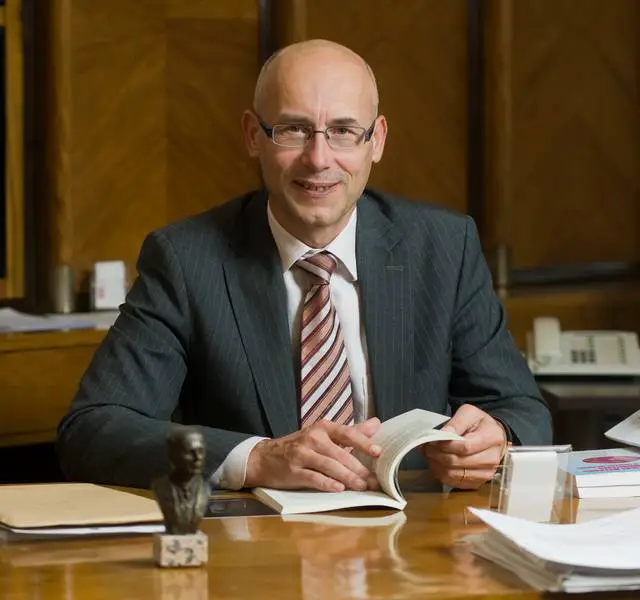
Janko Jamnik, Photo: Kemisjki Inštitut
In his eulogy in Delo, Stane Pejovnik, a former director of The National Institute of Chemistry and later Rector of the University of Ljubljana, wrote that he met Janko Jamnik for the first time when he, only 16 years old, came to the Faculty of Chemistry where Pejovnik was working as a teaching assistant to use their lab to create a Lithium-Thionyl Chloride system battery, which he eventually did quite successfully.
After high school Jamnik decided to study physics, which he completed with excellence and also received the prestigious Prešeren award for his graduation thesis in 1988. He earned his master’s degree three years later, and his PhD in 1994, which came as a result of research he conducted at the Max Planck Institute in Stuttgart. After that, Jamnik continued his work in Stuttgart as well as at Cornell University in Los Alamos National Laboratories. He then became a highly productive and influential researcher, with a Hirsch Index of 34 and more than 4,000 citations in the field of material science.
In 2000 the Institute of Chemistry invited Jamnik to take over the electrochemical materials research lab, in 2006 he became the president of the Scientific Council of the Institute, and in 2008 the director of the Institute itself. Under his leadership, the Institute evolved into one of the most prestigious research institutions in the country, and provided a strong link to the institutions of applied sciences and technology. The last cooperation established under his leadership was the one with Mitsubishi Hitachi Power Systems, wrote Delo following his death in another article about him.
On December 16, 2014, Janko Jamnik headed to the Institute’s New Year’s party at 19:00 in the Via Bona restaurant in Ljubljana – Vič, where he was expected to give a ceremonial New Year’s speech. He was running late as he had accompanied his wife and daughter to a Grandpa Frost show earlier that night. At about 19:40, Jamnik arrived at a nearby parking lot, locked his car and headed towards the restaurant. Someone got behind his back and shot him in the head twice, then left the scene. At 19:45 a passer-by informed the police about a heavily injured man lying on the ground of the parking lot. Jamnik was taken to the hospital, where he succumbed to his injuries three days later.
Investigation ensues
The police immediately begun its work by securing and investigating the scene and conducting interviews with Jamnik’s co-workers, former co-workers, acquaintances, friends and family members, anyone who could give any leads to possible motives for the gruesome act. Public calls for any information on possible clues were also issued.
The investigation eventually focused on a group of suspects who were believed to be at loggerheads with Jamnik, and hence had possible motives for the crime. According to Demokracija.si the indictment of Milko Novič lists six people who were requested to provide an alibi in the first days of the investigation. Besides Milko Novič, who was eventually arrested, Matej Janežič and Michel Stephan are also named, and three others who do not reappear in the story and shall be therefore left out for the time being.
Presumably all of them were also asked to be swabbed for the gunshot residue (GSR) analysis, which all of them agreed to do – except for Michel Stephan: “Michel Stephan disagreed with the type of the evidence protection procedure which is why the procedure has not been performed with him,” quotes the indictment Demokracija.
Novič, unlike the others, came up with an alibi with a ten-minute window before the time of the murder. He was arrested on December 22, six days after the shooting, with the GSR analysis showing positive results.
Arrest and trial of Milko Novič
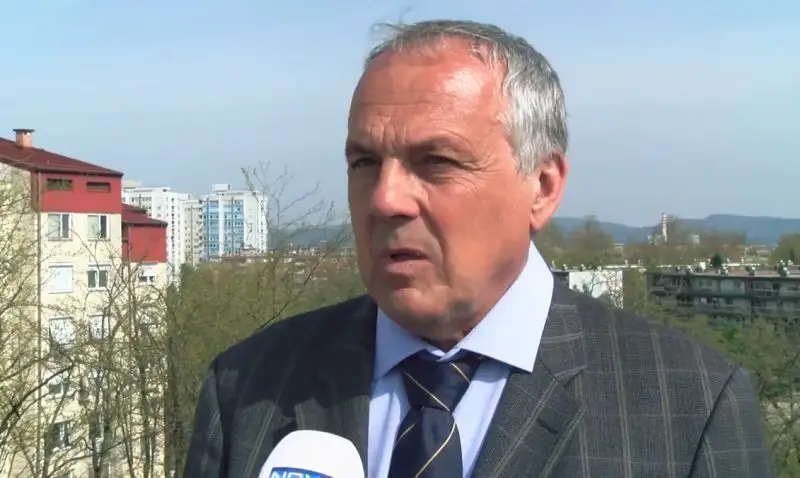
Photo: Screenshot of Nova24TV interview, Youtube
A long-time member of the National Institute of Chemistry, Milko Novič spent 2003-2004 at the University of Tasmania. There he visited a lavender field, and decided to do the same with his family land on the Slovenian karst. “The story that the karst is being overgrown because nothing is worthwhile doing there had to come to an end. I am not saying that I am some kind of a messiah who came to save the karst, I was mainly saving myself, or rather my family’s property. My main career is in research and I wished to have a side job which I would find attractive, not too demanding and after all, also commercially interesting” he stated for Delo in 2011.
But this hobby was not the only thing Novič found himself involved in on his return from Tasmania. Apparently, this was also the beginning of his legal troubles with the Institute, which eventually led to his dismissal in 2009, which, according to the prosecution, was a motive to commit murder.
In an interview he gave to Nova24TV last year, Novič stated that on his return from Tasmania he had found out that “they had stolen my laser ablation project which I took to the director of the Institute in a form of a complaint, but he replied with some sort of disciplinary measures, to which I replied with a legal suit at the labour court against the Institute, which I also won, but they must have made that decision insincerely,” as what he describes was followed by “chicanery” and “disciplinary measures” which “made the working conditions impossible” and finally led to “measures” that Janko Jamnik concluded after assuming the post of Institute director in 2008.
The Trial: prosecution vs defence
Novič was now known as a troublemaker. Immediately after the murder, a member of the technical support staff, Aleš Farkaš, reported to his boss, Damir Metelko, that Novič once told him he had a “hit list” with four or five names on it, which included those of Janko Jamnik and even Damir Metelko himself. Metelko reported what he was told to the police, although the “hit list” was never found and Novič dismissed the claim as a product of fiction. Still, Farkaš’ report on the “hit list” supported the prosecution’s motive argument of “ruthless revenge”.
Novič’ alibi, or rather the lack of it, was the second key factor for the prosecution, who claimed that Novič got to the scene by bicycle and committed the murder in a mere ten minutes, that is, between 19:30 and 19:40.
Novič lives with his wife, an employee of the Institute of Chemistry, and their daughter at Žaucerjeva Street in Ljubljana, not very far from where the murder took place. His wife left home earlier that evening for the Institute’s party, but without telling him exactly where the event was taking place. He stayed at home with their daughter until approximately 19:30, when the daughter left with her friend who, according to phone records, gave her a pick-up call at about 19:28. At the time of the call, Novič was watching TV and, according to his defence, continued to do so. The prosecution, however, after expressing doubt into daughter’s testimony, also claimed that after his daughter had left, Novič took his bicycle and rode about 1500 metres to the parking lot where he shot Jamnik, then left the scene, presumably for his home.
A map of the routes from Novič’s home at Žaucerjeva Street to Via Bona restaurant, where the Institute’s party was taking place and Janko Jamnik was shot at a nearby parking lot.
The defence argued that Novič would not have had enough time to cycle from his home to the parking lot and carry out the murder in less than ten minutes. According to the prosecutors, Novič would only need five to six minutes to get to the site, which makes their scenario completely plausible. On the other hand, Novič in his interview for Nova24TV makes an important point by claiming that there was no way he could have known that Jamnik would have been be at the parking lot at that time exactly.
There were no cameras present at the scene, but several surveillance cameras filmed the surroundings of the in- and outbound traffic routes by the restaurant. However, the poor quality of the footage does not allow any identification of faces or licence plates, and all that is visible are silhouettes of cyclists, cars, pedestrians and lights. Attempts were made for digitally improve the footage, but the quality of the video was too poor even for that.
The prosecution focused mainly on a cyclist without a light on his bicycle, believing him or her to be Novič, while the defence focused on the cyclist, car and a pedestrian, presumably working together to commit an organised crime.
One of the websites which follows the case published what seems to be the official court’s ruling, in which the court describes what the cameras saw. The document reports on a cyclist without a light, who arrives to the vicinity of the scene at about 19:35 and turns slowly in the direction of the Via Bona restaurant. At 19:37 Jamnik arrives in his car and ten seconds later the no light cyclist follows. At 19:39 the cyclist is then seen to ride fast in the opposite direction, away from the parking lot. At 19:39 the vehicle driven by Mr. Horvat, the person who found Jamnik wounded and lying on the floor, passes the camera. Then, at 19:40, a pedestrian walks from the direction of Via Bona and stops at the intersection, where he is picked up by a car at 19:41.
While prosecutors pointed to the obviously suspicious behavior of the cyclist with no light (Novič’s bicycle was not equipped with a light either), the defense insisted on the suspicious behaviour of the car which picked up the pedestrian, waiting at the crossroads after walking from the direction of the murder. The defence claim that the same car, a Fiat Punto, is visible behind Jamnik’s at the red light while the victim was on his way to the scene earlier on, suggesting that he must have been followed.
Another piece of evidence against Novič presented by the prosecutors was that his phone registered at Slovenia Telecom’s base station in the vicinity of Koprska Street, which is much closer to the site of the murder than to Novič’s home. A representative of Slovenia Telecom testified, however, that the signal from Novič’s phone could have been picked up by that station even if Novič was at home, as base stations, as seen in the picture below, tend to overlap in Ljubljana.
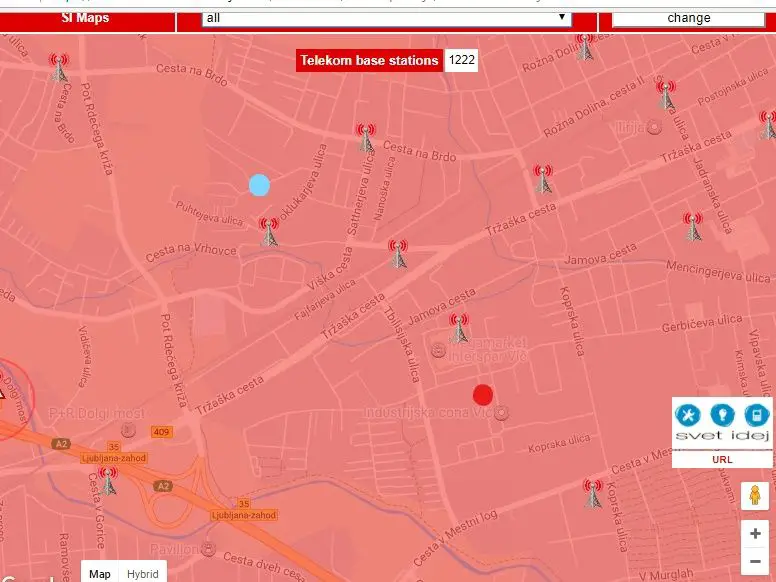
Blue dot: Novič' home, Red dot: Via Bona restaurant
GSR report- the cornerstone of Novič’ conviction
Finally, what became the cornerstone of Novič’s conviction, the gun shot residue (GSR) that was found on him. A day after the murder, Milko Novič responded to the police request, put a jacket on and left for the police station where swabs from his hands and hair were taken for the GSR analysis. As results turned out positive for traces of shooting particles, Novič explained that they must have gotten onto his body from the jacket he was wearing to the police station that day. He wore the jacket while visiting a shooting range about a year before the GSR tests were performed. More specifically, Novič is a member of a shooting club and the last time he shot at the range was in October 2013, while in January 2014 he came to the club only to pay the membership fee.
Novič’s jacket was analysed and GSR traces were also found on it. The arguments among the experts now focused on whether or not it was possible for particles to remain on his jacket for over a year and thereby contaminate his hair and hands on the day the swab was taken. Alternatively, the particles must have gotten on Novič’ jacket when he shot Jamnik the previous day. Furthermore, various particles were on the jacket, some very similar to those found in the used cartridge at the murder scene. The firearm itself has never been found.
At the initial hearings, the National Forensic Laboratory (NFL) report, signed by Ester Ceket analysed and compared the GSR particles from the cartridge and Novič’s jacket and found close matches in several cases of the analysis. Ballistic court expert Franc Sablič then interpreted the findings at the Court as pointing to Novič as the killer of Janko Jamnik.
The defence then found two other experts, the Croatian expert Vojin Mašturko and Miran Čeh from the Jožef Stefan Institute of Ljubljana, who testified the opposite, that is that GSR particles got to Novič’s jacket at the shooting range, inserted themselves deep into the fabric, stayed there and served as the source of contamination once the investigation took place.
The defence claimed Franc Sablič, a former director of the National Forensic laboratory, which operates under the police administration, cannot be impartial in his expertise, while the expert witnesses of the defence were accused of the same by the prosecutors. The court decided to apply for another, impartial expert opinion from abroad, which eventually came from the Bavarian State Bureau of Investigation Forensic Science Institute in Munich. The results, testified Edith Gebhart, who conducted the analysis, where inconclusive as the possibility of the contamination was confirmed.
The Slovenian ballistic expert Franc Sablič, who was called to testify in front of the court again, dismissed the results of the German scientist because the German forensics failed to answer what he claimed was a fundamental question, which is not whether the probability of contamination exists, which, he admits does, but rather, what is the level of probability for the contamination of these particular particles after such a long time. The German scientists, who conduct their work within the four options of answers, that is yes/no, it is possible/it is not possible, are not using the same probability scale, which is a common European standard, Sablič testified at court.
Franc Sablič rejected the contamination claims of the defence by his argument based on the probability scale, and reiterated that with the “probability on the edge of certainty” Novič was not contaminated by the particles he got at the shooting range, but instead their presence points to him being the shooter of Janko Jamnik a day before the specimen swab was taken. On the basis of this report, the district court of Ljubljana found Novič guilty of murder and sentenced him to 25 years in jail. On December 22, the higher court of Ljubljana confirmed and finalised district court’s decision.
It is noted that attempts to discredit the expert testimonies came from all sides in this case; however, if we keep in mind that proper research training begins during ones graduate studies, Slovenian experts Ester Ceket and Franc Sablič stand out as the only experts without a PhD degree, and this includes the convict himself. This certainly does not look good given that it was Sablič’s testimony which got Novič behind bars. This is an issue that the Slovenian legal apparatus should certainly address, if not to put its legitimacy in doubt.
However, as if the court proceedings were not mindboggling enough, an even stranger thing happened at the end of October 2017: one of the initial suspects, Michel Stephan, also a PhD in Chemistry and also a former employee of the Institute, was arrested on suspicion of ordering the killing of one other of the Institutes’ bosses, Janez Plavec.
Michel Stephan
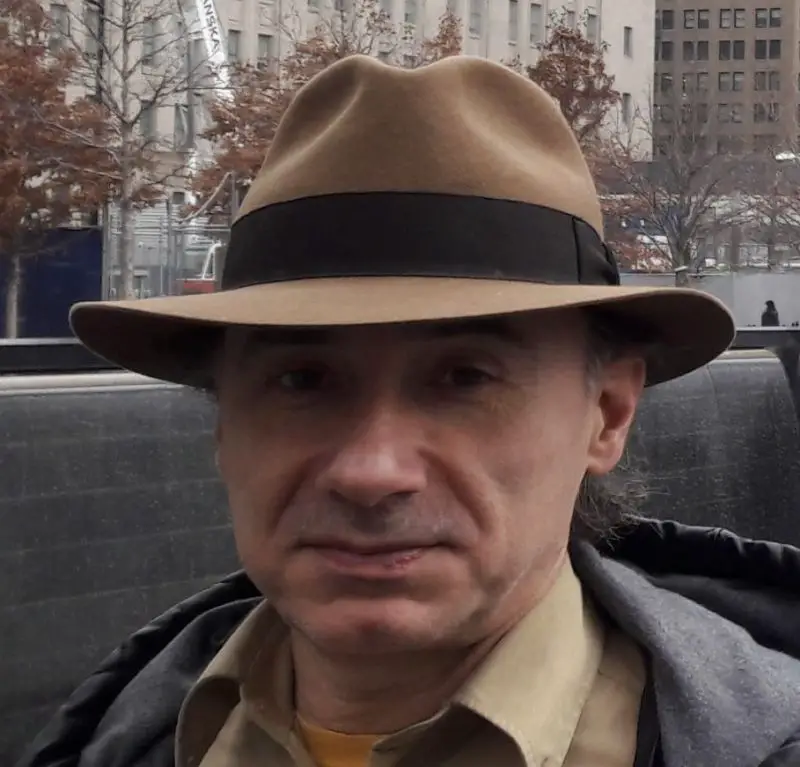
Michel Stephan, Photo: Personal archive for RTV SLO Radio 1, Drugi Pogled
Most of what we know about life of Michel Stephan comes from a national broadcaster's radio show called Drugi pogled (The Other View) from May 9, 2017, when Stephan was the main guest. In the show we learn that he was born in Beirut, the capital of Lebanon, and that when he was 10 years old a civil war broke out. He then lived in one of the war's hottest zones for about 12 years until he and his brother immigrated to Paris, where he eventually earned his PhD in chemistry. He then worked in various countries, including the UK, Germany, Japan and the United States until he got an invitation in 2001 from a Slovenian fellow researcher in Paris to join the National Institute of Chemistry in Ljubljana. He is currently employed at Donit Tesnit Medvode.
Less than half a year after the interview, in which Stephan describes war as 'something that brings the worst out of humans', but also as 'something that brings the best out of them', he was arrested on suspicion of inciting the murder of Janez Plavec, a member of the Institute's Science Council and the head of the National NMR Centre, one of the 17 departments which constitute the National Institute of Chemistry.
The arrest of Michel Stephan
The arrest of Michel Stephan on October 20, 2017 only became known to the media in the second half of November, when the Ljubljana district court confirmed the ongoing court investigation into the suspicion of ordering a murder, scheduled for October 27, 2017.
On November 22, 2017 Večer wrote that the Institute of Chemistry issued a statement in which they expressed “deep shock over the planned act. To our colleague who was supposed to be the target of the attack we offered all possible professional help. We do not know of any reason for this perverted act, as the person who planned it has not been the Institute’s employee since their contract expired in 2010.”
Even though the investigation into the contract killing of Janez Plavec has been taking place behind closed doors (the investigation procedure is a court process in Slovenia), the media managed to dig out some unofficial details with regard to the case. According to Večer, Stephan promised a foreign citizen living in Ljubljana 25,000 EUR to commit the murder, and it was the contract killer who later changed his mind and reported the incident to the police, who set up an ambush and caught the couple while they were testing a handgun in a forest near Ljubljana.
Even more detail is given by Nova24TV, which identifies the other man as Ali Hamzah Rasheed, a citizen of Iran, and describes in detail the two-day movement of the pair in Ljubljana. According to this article, the two men met at about 18:00 in a café, I presume it was October 19, 2017, and Stephan immediately insisted on a change of the location. They left for one restaurant and after that to another, where Stephan felt safe enough to take out a map and point to the location of Plavec’s house. He then put the map away and told Rasheed he would bring him another map later that night, along with the “rest of the things”. Before they split, Stephan measured Rasheed from his shoulder to his waist for the handgun carrier. When they met later that evening, Stephan brought Rasheed what he promised, including 3,100 EUR of advance payment for the job he was to carry out. They agreed to meet the next day in Šiška in order to test the weapon. They headed towards the forest, and once there Stephan set up two bags of sand, then gave a loaded handgun with a silencer to Rasheed, who shot in the bags twice. Then they headed back to the road, and at this point they were arrested by the police.
Novič met Stephan in the investigating prison, but had no idea what he was there for. They never really spoke as they worked in different fields, but they knew each other’s faces. Novič only found out what Stephan was doing there from the media a month later, amid his defence’s preparations for the higher court’s hearings of his case. “I know he was banned from entering the Institute’s building after his contract expired,” stated Novič in an interview for Nova24TV, and he added that Stephan avoided eye contact with him: “He is constantly avoiding this, he turns away.”
Statements of Janko Jamnik’s mom and dad.
At the higher court's first session on Milko Novič’s case on December 20, 2017, Novič's defence insisted that due to the possibility of both cases being connected the court should include testimonies of several new witnesses in its hearings. All suggestions from the defence but one were turned down by the court, that is, the testimony of the murdered Janko Jamnik's father, Anton Jamnik. He was to be heard two days later, on December 22, 2017, which also became the day of the court’s final ruling.
However, on that date Anton Jamnik could not appear at the court due to health issues, but his wife, Ana Jamnik, Janko Jamnik's mother, showed up willing to testify in his place. The court turned down the proposal of Ana Jamnik's testimony and decided that Anton Jamnik's statement from the investigation process be read instead. Anton Jamnik told investigators that about a week before he was killed his son had told him that he was afraid that someone might kill him, as he had many enemies. He mentioned Milko Novič and Dušanka Janežič, a former head of the Molecular Modelling Department at the Institute of Chemistry, who sued the Institute after being fired in 2013. Anton Jamnik then also stated that Dušanka Janežič's son (Matej Janežič), who was also working at the Institute, had some sort of organised crime connections.
Dušanka Janežič's departure from the Institute was written about extensively at the time of her dismissal by several Slovenian newspapers, and the story reads like a textbook case of nepotism and abuse of office, as pretty much seen in every corner of Slovenian society.
In 2013, writes Delo, that the Institute of Chemistry received a report from the Commission for the Prevention of Corruption of the Republic of Slovenia (KPK), which followed an anonymous report, that Dušanka Janežič first secured for her son, Matej Janežič, a young researcher position (mladi raziskovalec) at the Institute of Chemistry, despite the fact that he was an economics student. She then employed her son’s partner in the position of her secretary, also within the Institute, and finally used their staff cards to clock them in when they were in fact absent from work. The Institute of Chemistry under the leadership of Janko Jamnik then decided to fire the three, while KPK issued a report on the matter which is closed to the public and handed its findings to the criminal police. The chain of suits and counter-suits ensued, and the matter seems to be far from over.
This, however, wasn’t the only case of dubious money-related activity in the Institute at this time. The Institute seems to have experienced strong inflows of money, unusual for the peak austerity times, and certain irregularities with regard to the distribution of the spoils caught the eye of the media.
According to Delo, their investigation into possible conflicts of interest with regard to the Institute’s Board of Governors president Janez Levc and payments of awards to Janko Jamnik, as well as and other employees of the Institute, began in late 2014. In 2013 Janez Levc took one of the Board’s two seats reserved for the public interest representatives, despite the fact that he was also one of the Institute’s employees. A very unusual step of action for an institution of the kind, to say the least. Among other things, the Board also decides on amount and distribution of awards among the employees. In early 2014, the board discussed exactly this issue, reports Delo, and 56,000 EUR of work stimulation and award budget was approved, of which 12,270 each was awarded to Janko Jamnik and his deputy Aljoša Trtnik, the rest was distributed among about 100 other employees. In the middle of Delo’s investigation news of Janko Jamnik’s murder broke out.
On the last day of Milko Novič’s court hearing, Ana Jamnik, Janko Jamnik’s mother, offered to testify before the Higher Court of Ljubljana as a substitute witness for her sick husband. The court refused her testimony, so she headed straight to the media. She confirmed her husband’s claim that in the weeks preceding the murder her son expressed fears for his life.
This has also been described by several other witnesses in the court hearings, including his secretary and one of his colleagues who quoted him saying “I will get shot, I will die before you”. Unlike Anton Jamnik, however, none of these witnesses associated Janko Jamnik’s fear for his life with a possible threat of Milko Novič.
Milko Novič caused him lots of trouble, stated Ana Jamnik for Nova24TV on December 22, 2017, but he was not afraid of him. In addition, Ana Jamnik told the media that her son mentioned Dušanka Janežič on several occasions, and that her lawyer had threatened him in the past as well.
The second person Janko Jamnik was afraid of, according to Ana Jamnik, was Michel Stephan, who after his contract expired continued to come to work, which is why Jamnik banned him from the Institute's premises.
Regardless of what we might think really happened, the only facts we can rely on are that Janko Jamnik, PhD in physics, was murdered on December 16, 2014, Milko Novič, PhD in chemistry, is serving a 25-year prison sentence, and Michel Stephan, PhD in chemistry, is under investigation for the suspicion of ordering the murder of Janez Plavec, PhD in chemistry.
In the months ahead we will keep you posted on further developments in this very interesting case.

